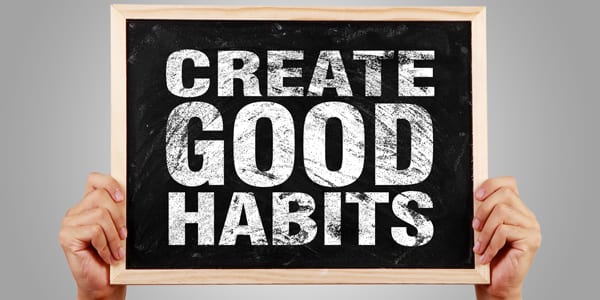 I probably have more questions than answers on this topic, which is an annoying habit of mine that I’m trying to break. In the meantime, here are four commonly asked questions (and answers) regarding what it takes to identify both good and bad habits—and how your reaction to those habits can shift organizational behaviour and affect positive change within your organisation…
I probably have more questions than answers on this topic, which is an annoying habit of mine that I’m trying to break. In the meantime, here are four commonly asked questions (and answers) regarding what it takes to identify both good and bad habits—and how your reaction to those habits can shift organizational behaviour and affect positive change within your organisation…
Can’t I just tell people what they’re doing wrong?
My working life is spent trying to improve organisations through their culture; the behaviour of their people, both leaders and employees. Telling people they need to change isn’t particularly realistic or helpful. People generally have more energy for positive endeavours rather than negative ones like trying to change our bad habits. Don’t get me wrong, many organisations are full of bad habits, but focusing on them is not going make a difference. It’s better to focus on the important things to do well and why they will benefit people.
So, I just need to tell people what the right thing to do is?
Habits are difficult to change. Habits fit into what social psychologists refers to as our schema, the protocols for how we make sense of the world. We have one for everything we do, and because they are embedded in an emotional part of our brains, they tend not to respond to logic very well. Whilst they are very resistant to change, they can be altered if something better becomes available and we can’t afford not to use it. Look for those opportunities. Think Dick Fosbury setting a new Olympic record with the Fosbury Flop, changing every high jumper’s technique overnight. Think Uber changing the way we use cabs and squarely questioning the need for car ownership.
How do I tackle something so big?
Organisations that try to tackle the culture all at once inevitably run out of steam, so take a leaf out of Leandro Herrero’s Viral Change approach and focus on creating a few, non-negotiable habits and using the success of these to move on to the next set. Organisations trying to change their entire culture at once forget that they have built very successful businesses on the strength of the way they work and the things they do well. Focusing on the few key things that made your company great is a good place to start.
But how can I convince people to care?
Things don’t get done by people unless there is some intrinsic or extrinsic value in it.
In the 1980s, Dannemiller created an equation for organisational change: Dissatisfaction x Vision x First Concrete Step > Resistance. Basically she is saying that there has to be a good reason to change and we need to be able to see the value and how we are going to get to that value. People need to feel that their new habits are not only meaningful but also make them feel good. BJ Fogg of Stanford University encourages people to start small and build up a behaviour with a self-celebration every time you complete the new behaviour because it helps you to repeat it and create a new habit.

So what does it all mean for creating effective habits in organisations?
1. Think small, be positive – begin with only the two or three priorities where new, useful habits will make the most impact within your business. Work hard to create hope, to make it fun and meaningful to your leaders and all of your people.
2. Starting is easy, keeping it going is hard – use creative communications and experiences to co-create and introduce the new habits. But don’t forget to do the work upfront to make sure Leadership understands the business impact and cares about what happens to the habit over time, promoting, praising and rewarding the desired behaviours in employees.
3. You need to see visible results – you have to track the impact of the new habits, linking them to Key Performance Indicators that are respected in the business. It’s not always easy, but you’ve got to prove that the new habits are driving business success.
In short, if you want to achieve your desired culture: make the habit, don’t try to break it.